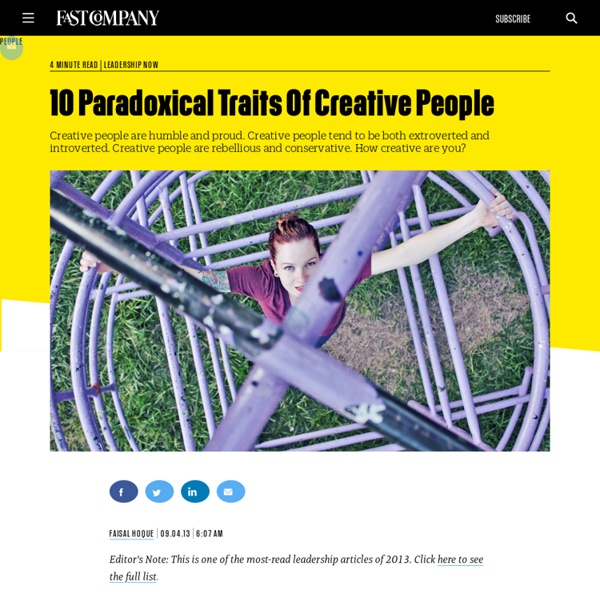10 Paradoxical Traits Of Creative People

How Benedict Cumberbatch And Alan Turing Helped A Writer Find Success In Hollywood
Ten words to cut from your writing
As Mark Twain famously wrote, "I didn't have time to write a short letter, so I wrote a long one instead." His point? Strong writing is lean writing. When you want to make your writing more powerful, cut out words you don't need--such as the 10 included in this post: 1. 2. 3. 4. 5. More from Entrepreneur.com 6. 7. 8. 9. 10. Whether you've been writing for a few days or for many years, you'll benefit from evaluating the words you use. Copyright © 2013 Entrepreneur Media, Inc.
Susan Sontag on Writing
by Maria Popova “There is a great deal that either has to be given up or be taken away from you if you are going to succeed in writing a body of work.” The newly released volume of Susan Sontag’s diaries, As Consciousness Is Harnessed to Flesh: Journals and Notebooks, 1964-1980 (public library), from whence Sontag’s thoughtful meditations on censorship and aphorisms came, is an absolute treasure trove of rare insight into one of the greatest minds in modern history. Among the tome’s greatest gifts are Sontag’s thoughts on the art, craft, and ideology of writing. Gathered here are the most compelling and profound of Sontag’s thoughts on writing, arranged chronologically and each marked with the date of the respective diary entry. I have a wider range as a human being than as a writer. Words have their own firmness. Writing is a little door. If only I could feel about sex as I do about writing! Kafka the last story-teller in ‘serious’ literature. I think I am ready to learn how to write.
Welcome to My Homepage! Christian Cawley Freelance Writer.Christian Cawley | Freelance Writer, Editor and Website Manager
18 Things Highly Creative People Do Differently
This list has been expanded into the new book, “Wired to Create: Unravelling the Mysteries of the Creative Mind,” by Carolyn Gregoire and Scott Barry Kaufman. Creativity works in mysterious and often paradoxical ways. Creative thinking is a stable, defining characteristic in some personalities, but it may also change based on situation and context. Inspiration and ideas often arise seemingly out of nowhere and then fail to show up when we most need them, and creative thinking requires complex cognition yet is completely distinct from the thinking process. Neuroscience paints a complicated picture of creativity. As scientists now understand it, creativity is far more complex than the right-left brain distinction would have us think (the theory being that left brain = rational and analytical, right brain = creative and emotional). While there’s no “typical” creative type, there are some tell-tale characteristics and behaviors of highly creative people. They daydream. They “fail up.”
Related:
Related:



